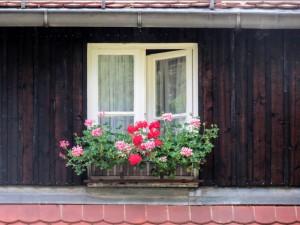Sustainable Living & Sustainable Lifestyle
Building a Home with the Environment in Mind
When it comes to the health of the planet, everyone must do their part to minimize their carbon footprint. The construction industry has been in the spotlight of late, as more people are clamoring for materials and building methods that are environmentally friendly. The five green building tips outlined below will result in the construction of a greener home without compromising the structure or integrity of the building.
 The first green building tip is to install a fireplace insert. Fireplaces are not as energy efficient as many people think. Rather than waste your space, put in a fireplace insert instead. You will still be able to light both paper and logs, giving you some warmth, and the setup itself is often very attractive to look at. Best of all, a fireplace insert can be 50 percent more efficient than a traditional fireplace. Not to mention it could help reduce your carbon footprint at the same time.
The first green building tip is to install a fireplace insert. Fireplaces are not as energy efficient as many people think. Rather than waste your space, put in a fireplace insert instead. You will still be able to light both paper and logs, giving you some warmth, and the setup itself is often very attractive to look at. Best of all, a fireplace insert can be 50 percent more efficient than a traditional fireplace. Not to mention it could help reduce your carbon footprint at the same time.
Proper insulation is vital to any home; obviously, you don’t want to let the warm or cool air circulating inside the building to escape because it is a huge waste of energy. Traditional insulation methods work well, but they are not as eco-friendly as newer methods. Spray-on insulation is air tight and gap free and can be used internally on floors, roofs and walls. Discuss the insulation options with you local energy auditor or insulation worker to find green options when choosing the insulation type.
While they may be a little more expensive initially, Energy Star appliances are ultimately better for the environment, and your wallet, than other machines. In your kitchen, look for a dishwasher and refrigerator that meets your needs and has the Energy Star label. Do not forget to leave room in the budget for a washer and dryer and hot water heater, too.
Concrete production contributes heavily to carbon emissions. Therefore, if you can find a way to avoid using concrete in the construction process, it is important to do so. Honeycomb blocks are becoming more popular overseas, primarily because they are light and easy to use. Another promising development is hemp; there is now a load bearing block that features a lime-cement binder along with this plant.
While solar panels are often considered a costly investment, it is important to remember that within ten years, most people get their money back as a result of energy savings. However, not every home is a good fit for solar panels. Once your home is built, go up on the roof in the morning around 10:00. Check to see if it receives sunlight. Do the same thing in the afternoon, around 4:00. Also, consult a professional to get their opinion. If you do make the investment, you want to make sure you are getting your money’s worth.
There are a lot of decisions to make when building a home. Keeping the process as eco-friendly as possible will benefit both your family and future generations to come. Use the strategies above as a starting point, and go from there. And, once the building process is over, continue your “green” mission by recycling as much as possible and using local services, like Fox Pest Control if you happen to live in that area.